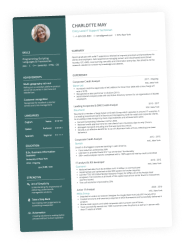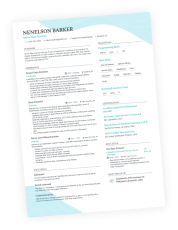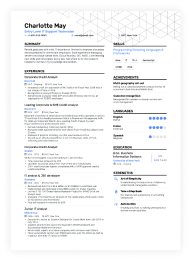Have you ever seen a similar message pop up when applying for a job?
“I wish to opt out from having my resume reviewed by artificial intelligence as part of the application process.”
With all the scares surrounding AI going around and grim scenarios of robots taking over all our jobs, it’s only natural that you feel seduced by the option to put up a fight. But is opting out of AI reviewing a resume really doing that?
When a job application allows you to opt out of AI screening, it could mean one of two things. Either the employer genuinely offers a human-only review option, or, more likely, it’s simply a notification that AI is part of the process, giving you the chance to opt out if you choose.
But what does opting out really mean for your chances of landing the job? Let’s explore the implications and weigh the options in the sections below.
Key takeaways
- By 2026, 83% of companies will use AI to review resumes, making it essential to understand the process.
- Declining AI screening might exclude your resume from the hiring process entirely.
- ATS tools rank resumes based on relevance and don’t reject them automatically.
- Human recruiters still review resumes after ATS screening, so clarity and impact are critical.
- Modern ATS can handle PDFs, creative layouts, and even some visuals if well-structured.
What is AI Screening?
AI screening refers to using artificial intelligence in the application reviewing process. It usually involves automated systems that scan, rank, and filter resumes. The first and main step in the process is going through an Applicant Tracking System (ATS).
What happens when an ATS reviews your application? First, technology is used to extract key information from your resume, such as your core competencies, work experience, and education.
The ATS is looking for keywords relevant or present in the job description. A match ensures that the candidate possesses the needed qualifications. Finally, the ATS assigns the resume a score to determine if it moves forward.
Why Do Employers Use AI to Screen Resumes?
Companies and organizations use AI to screen resumes because it saves considerable time and resources. If you’ve used ChatGPT to write your resume, you’re also aware of the benefits: it reduces effort, and helps you craft a polished, professional document tailored to your target job.
Prevalence of AI and ATS in 2026
Statistics show that in 2026, 83% of companies plan to use AI for reviewing resumes, and 75% of recruiters use ATS for resume storage and management.
Since more employers are using AI to review resumes, they’re well aware of its benefits. In today’s busy world, it’d be counterintuitive not to use them.
Keep in mind that AI also offers advantages for job seekers. For example, New York City’s Local Law 144 requires employers to conduct annual bias audits and disclose their AI usage to candidates. This promotes accountability and reduces discriminatory practices.
What Does Opting Out of AI Screening Mean?
Opting out of AI screening can come with significant consequences: your resume might not be reviewed at all. More often than not, the option to bypass AI screening serves as a disclosure that AI is part of the hiring process rather than a true alternative.
The reality is that refusing AI screening could mean excluding yourself from the interview process entirely, as many companies rely heavily on automated systems to handle the initial stages of recruitment.
Of course, this doesn’t mean you can’t opt out. Smaller companies and startups may not use ATS, which is good news for those who prefer their resumes to be reviewed by human eyes.
Should You Opt Out of AI Resume Screening?
You should opt out of AI screening if you’re confident that a human reviewer would better appreciate your unique qualifications or if you have concerns about potential technology bias and lack of transparency.
However, staying in the system could make make more sense, as most modern hiring processes use AI at some stage, and rejecting AI screening could result in delays or even exclusion from consideration altogether.
Ultimately, understanding how AI reviewing works and tailoring your resume accordingly can improve your chances without needing to opt out.
Pros and Cons of AI Resume Screening
Let’s review the good and the bad about AI resume screening.
The ups and downs of AI resume screening
| PROS | CONS |
|---|---|
| Processes applications quickly, reducing time-to-hire. | May overlook creative or non-standard resume formats. |
| Eliminates human biases by applying uniform evaluation criteria. | Relies heavily on pre-set algorithms that may not accommodate unique applications. |
| Allows applicants to tailor their resumes with relevant terms to meet requirements. | Overemphasis on keywords can lead to resume keyword-stuffing, making it harder to read. |
| Can handle large volumes of applications efficiently. | Candidates for niche roles or industries may be overlooked due to rigid algorithms. |
| Some systems provide candidates with feedback on why they were filtered out. | Not all AI tools disclose the evaluation criteria, leading to uncertainty. |
| Reduces manual effort and hiring costs for employers. | Initial implementation and maintenance of AI tools can be expensive. |
Busting Myths About AI Screening
There are plenty of misconceptions about how AI screening works, and these myths often cause unnecessary stress for job seekers.
Let’s set the record straight by addressing some of the most common ATS myths:
Myth #1
ATS automatically rejects resumes without specific keywords
Explanation: While keywords are important for helping ATS match your resume to a job description, they don’t cause automatic rejection. Instead, ATS systems rank and score resumes based on how closely they align with the role. A resume with strong content and relevant experiences can still pass through, even if it’s not packed with keywords.
Myth #2
ATS cannot read resumes in PDF format
Explanation: Many modern ATS systems are fully capable of reading PDFs, as long as the file is text-based and not just an image. This means you can confidently submit your resume in PDF format if it’s properly structured and formatted.
Myth #3
ATS can’t process creative layouts, like double-column resumes
Explanation: Contrary to popular belief, most advanced ATS can handle double-column or creative resume formats. The key is to ensure the information is organized and easy to parse, so both the system and human reviewers can understand it.
Myth #4
ATS rejects resumes with graphics, logos, or other visual elements
Explanation: While it’s true that overly complex designs can sometimes confuse older ATS software, modern systems are much better at parsing resumes with graphics or logos. However, it's still a good idea to use visuals sparingly and present all critical information in a clear, text-based format. This way, both the ATS and human recruiters can easily understand your qualifications.
How to Optimize Your Resume for Both AI and Humans
Most likely, a real person will review your resume at some point in the hiring process. ATS tools aren’t designed to make hiring decisions but to help people make them.
Once your resume passes the initial screening, it’ll land on a recruiter’s or hiring manager’s desk for a more in-depth review. Here’s how to make it compelling and tailor it for both ATS and a human reviewer:
- Focus on presenting your qualifications clearly and concisely, with quantifiable achievements and relevant details that resonate with both AI and human audiences.
- Steer clear from stuffing your resume with keywords. While using industry-specfic language in the job ad is crucial, be mindful of how often you mention them to avoid sounding unnatural.
- Start bullet points with dynamic verbs like "led," "implemented," "optimized," or "streamlined" to create a strong impact.
- Submit your resume in a PDF to preserve your chosen layout, but check the job posting for format preferences.
- While AI prioritizes hard skills, human reviewers also value leadership, communication, and teamwork.
PRO TIP
Run it through an online ATS scanner to identify keyword gaps or formatting issues before submitting.
Conclusion
Understanding what “opting out” of AI screening truly means is key to making an informed decision. Instead of fighting the system, focus on crafting a strong, ATS-friendly resume that works for both AI and human reviewers to maximize your chances of success.
Make one that's truly you.



